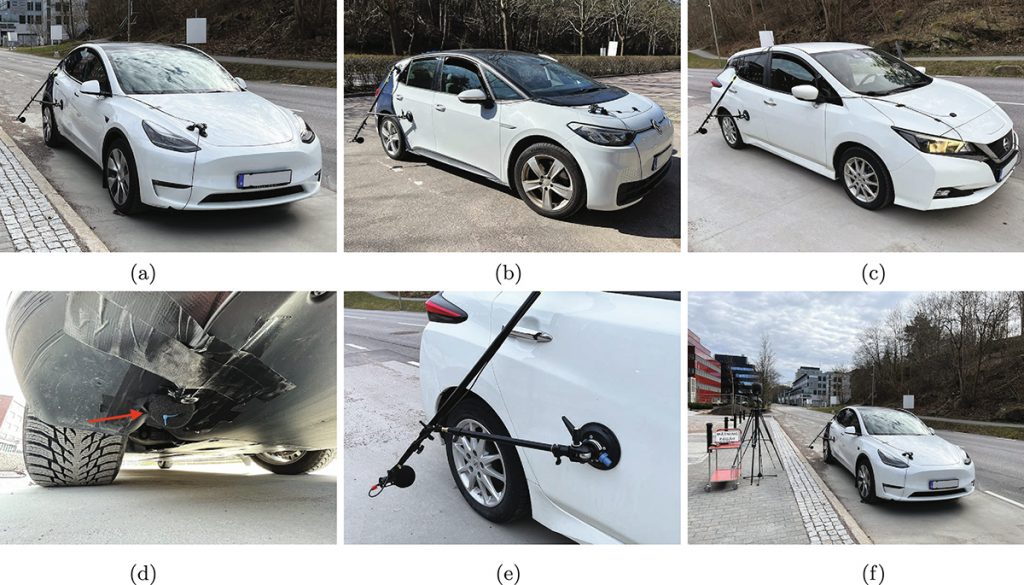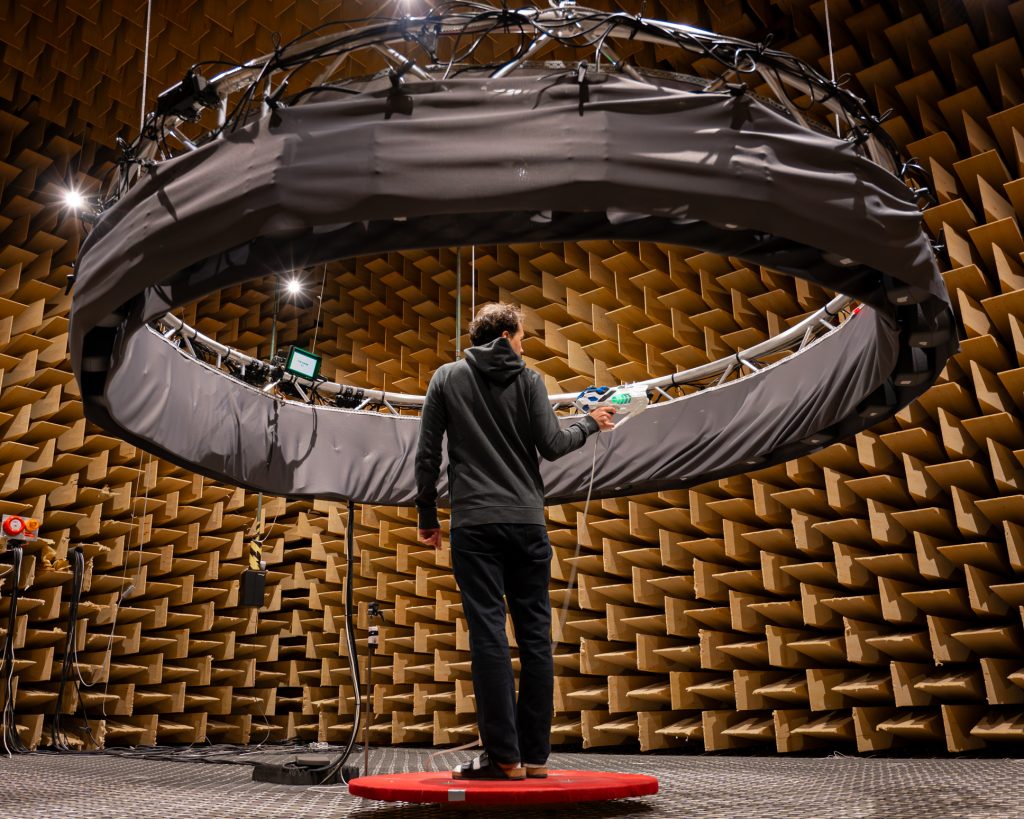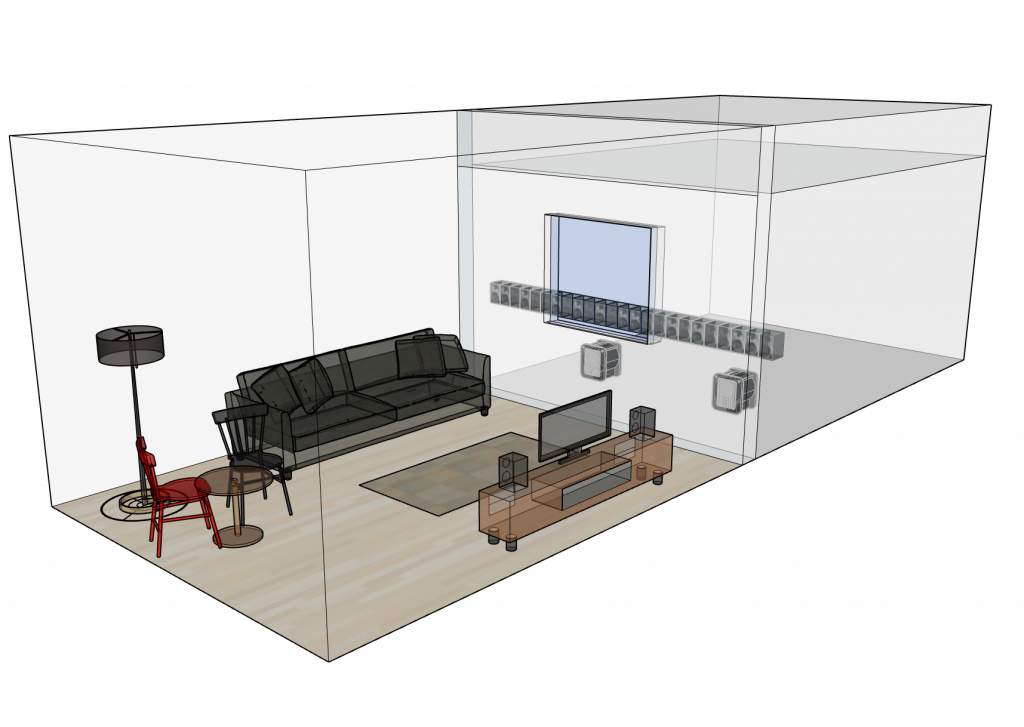The following audio examples accompany the project “Ett virtual akustiskt urbant rum för att säkerställa hälsa och säkerhet” funded by FORMAS, a Swedish research council for sustainable development, under grant agreement FR-2020-01931.
How do electric vehicle pass-bys sound?

The following sounds are binaural recordings, please use headphones for the best experience.
In the first part of the project, we recorded different existing electric vehicles and developed tools to re-create these vehicle sounds in virtual environments. The following examples are pass-by recordings for three different EVs recorded close to a street. In addition, we also placed microphones close to the tires and close to the loudspeaker that emits the AVAS signal. By listening to these, you should be able to identify which parts of the pass-by recordings are actually characteristic EV sounds.
The first example is an electric vehicle with a futuristic-sounding so-called multi-tone AVAS
| EV1 Pass-By | |
| EV1 Tires Only | |
| EV1 AVAS Only |
The second example is an electric vehicle with a more subtle noise-based AVAS
| EV2 Pass-By | |
| EV2 Tires Only | |
| EV2 AVAS Only |
The third example is an electric vehicle that used only two amplitude-modulated tones as AVAS. This specific sound is only audible when the vehicle drives backward.
| EV3 Pass-By | |
| EV3 Tires Only | |
| EV3 AVAS Only |
More Details about these recordings and the auralization methods we developed are available in
Müller, L. & Kropp, W.: Auralization of electric vehicles for the perceptual evaluation of acoustic vehicle alerting systems. Acta Acust. 8, 27 (2024). https://doi.org/10.1051/aacus/2024025
Does AVAS Directivity influence speed Perception?

| Real AVAS Directivity | |
| Cardioid AVAS Directivity | |
| Omnidirectional AVAS |
Müller, L. & Kropp, W.: On the influence of AVAS directivity on electric vehicle speed perception. in INTER-NOISE and NOISE-CON Congress and Conference Proceedings vol. 270 2731–2742 (2024). https://research.chalmers.se/publication/543078/file/543078_Fulltext.pdf
How easy is it to localize these sounds?

First, let’s only consider single vehicles. Do you feel like you can accurately determine where these sounds are coming from?
| Two-Tone AVAS | |
| Multi-Tone AVAS | |
| Noise AVAS | |
| Combustion |
What happens if we are confronted with two vehicles using the same type of sound? Can you clearly pinpoint the location of these sounds?
| 2x Two-Tone AVAS | |
| 2x Multi-Tone AVAS | |
| 2x Noise AVAS | |
| 2x Combustion |
For an even more extreme example: What happens if you hear three similar sounds simultaneously?
| 3x Two-Tone AVAS | |
| 3x Multi-Tone AVAS | |
| 3x Noise AVAS | |
| 3x Combustion |
Müller, L. Forssén, J. & Kropp, W.: Auditory Localization of Multiple Electric Vehicles. The Journal of the Acoustical Society of America 157(3) (2025). https://doi.org/10.1121/10.0036248
How annoying are these sounds when we hear them in our living environments?

| Indoor Two-Tone AVAS | |
| Indoor Multi-Tone AVAS | |
| Indoor Noise AVAS | |
| Indoor Combustion |
Müller, L. Ahrens, J. & Kropp, W.: Loudspeaker Array-Based Auralization of Electric Vehicle Noise in Living Environments. Under review in Forum Acusticum 2025: 11th Convention of the European Acoustics Association, 23rd – 26th June 2025
